Hong Kong hit me different than I expected. I’d seen the Instagram shots—those neon-lit streets, the skyline, the dim sum spreads. But being there? Actually walking through a temple thick with incense smoke at 9am, then riding a spotless MTR train to Disneyland an hour later? That’s the whiplash this city gives you and I mean that in the best way.
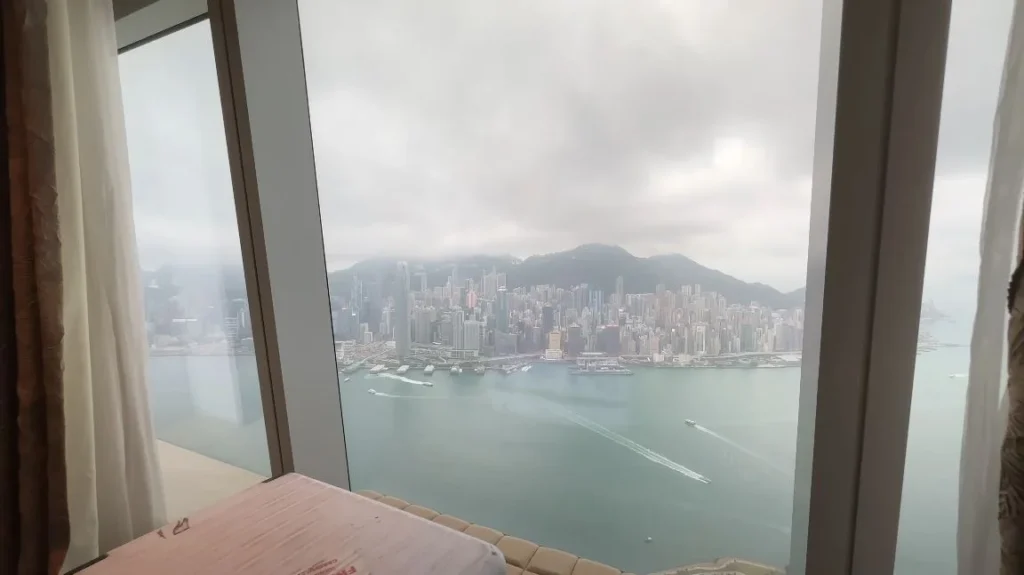
I woke up to this view every morning. My hotel room sat high enough in Kowloon that I could watch ferries cutting across Victoria Harbour while the Hong Kong Island skyline pushed up against the mountains behind it. The weather stayed overcast most days—typical Hong Kong, apparently—but that haze just made the whole scene feel more cinematic. Like I’d stepped into a Wong Kar-wai film or something.
The trip wasn’t planned months in advance. I had maybe three weeks to figure it out, book flights, sort accommodation. Sometimes those spontaneous trips turn out better anyway because you’re not carrying this weight of expectations. You just show up and let the city do it’s thing.
Getting Around: The MTR Became My Best Friend
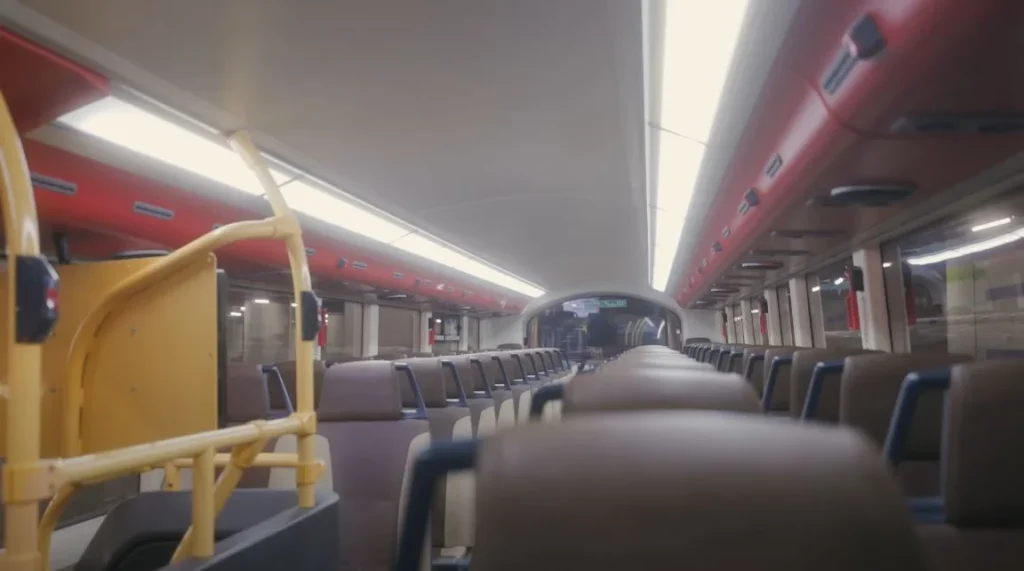
Hong Kong’s MTR system is legitimately one of the cleanest, most efficient metro systems I’ve used anywhere. And I’ve been on a lot of trains—Tokyo, London, New York. The Hong Kong MTR just works. Trains show up every few minutes. Stations are clearly marked in English and Chinese. The Octopus card (their rechargeable transit card) taps you in and out so fast you barely break stride.
That empty train car in the photo? That’s rare. Most of the time I was sardined in with commuters, tourists, students, elderly folks heading to markets. But even during rush hour, there’s this unspoken order to how people move. Everyone queues properly. People let you exit before boarding. It’s civilized chaos.
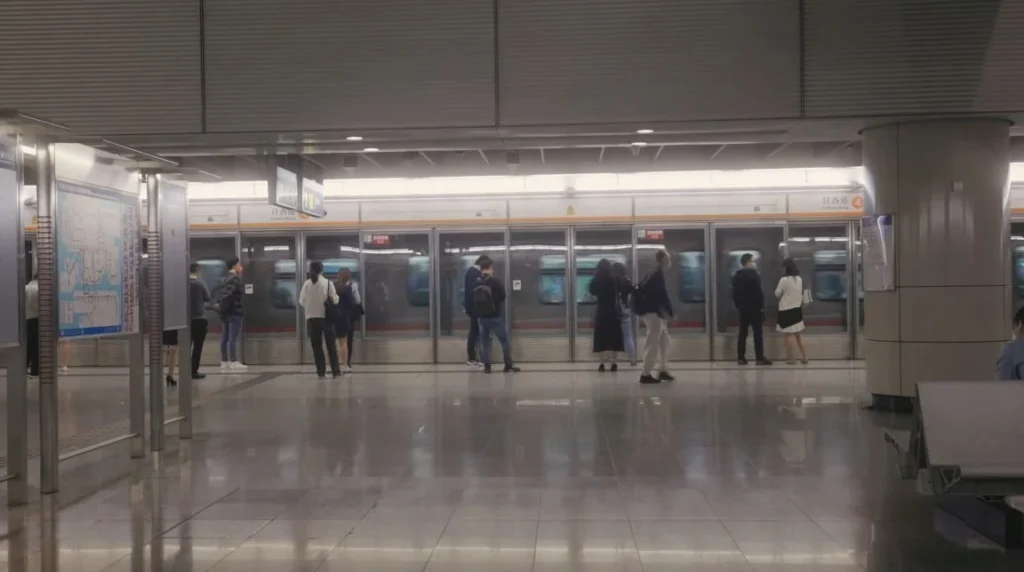
I probably took the MTR 15-20 times during my stay. From Tsim Sha Tsui where my hotel was, I could reach almost anywhere within 30-40 minutes. Disneyland required one train transfer but was straightforward. The night markets in Mong Kok? Direct line. Temples? A few stops and a short walk.
Key MTR Tips I Picked Up:
- Get an Octopus card immediately at the airport. Saves you from buying individual tickets every time.
- Download the MTR Mobile app—real-time updates on delays, which almost never happen but still.
- Avoid traveling between 8-9am and 5:30-7pm if you can. Rush hour here is no joke.
- Station exits matter. Some stations have 10+ exits. Check your map before going up the escalator or you’ll surface three blocks from where you meant to be.
The thing about Hong Kong’s public transport is it removes so much friction from exploring. I never had to think “is this too far?” or worry about surge pricing or negotiate with drivers. Tap in, sit down, tap out. Done.
Where I Stayed: That Harbour View Though
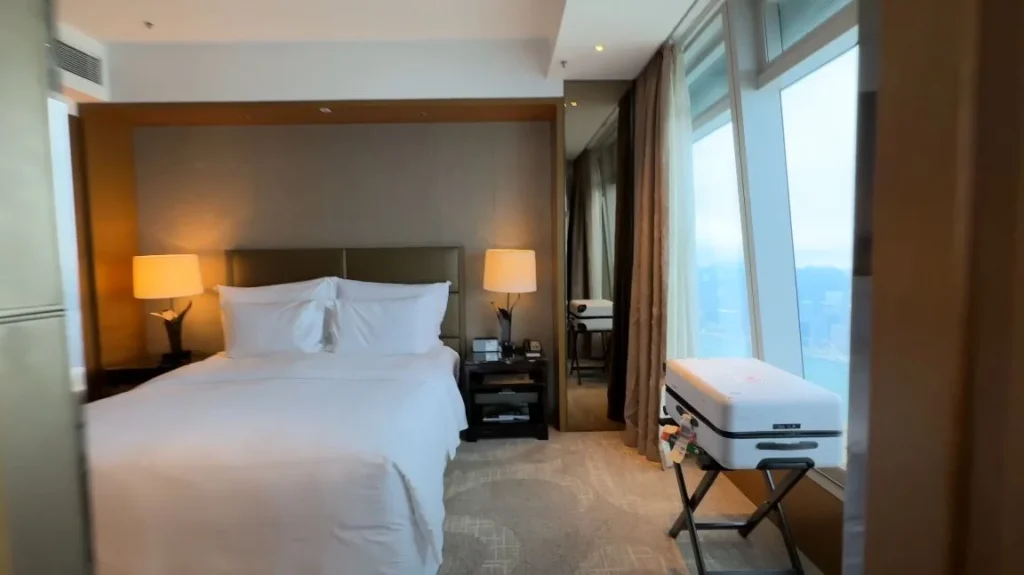
My hotel room faced Victoria Harbour directly. Floor-to-ceiling windows. I’d wake up, pull back those curtains and just stand there for five minutes taking it in. Some mornings the fog was so thick you could barely see the island. Other times it cleared just enough to make out individual buildings across the water.
The room itself was standard luxury hotel—clean lines, comfortable bed, that particular smell hotels have that’s somehow both sterile and expensive. But I wasn’t there for the room. I was there for that view and the location.
Staying in Kowloon: Why It Worked
Kowloon side puts you closer to a lot of the grittier, more local experiences. Temple Street Night Market is walking distance from most Tsim Sha Tsui hotels. You’re near the Star Ferry terminal if you want to cross to Hong Kong Island the old-school way. And honestly, I liked looking at the Hong Kong Island skyline from across the water rather than being in it.
The hotel had everything I needed—fast wifi, a gym I never used, breakfast buffet I used exactly once before realizing I’d rather hit up local spots. Staff spoke perfect English and Cantonese. Concierge helped me sort out tickets for a few things without the hard sell you sometimes get.
Would I stay there again? Probably. Though next time I might try something in Central or Causeway Bay just to compare. But that view from Kowloon? Hard to beat.
The Food Scene: From Street Stalls to Proper Dim Sum
This is where Hong Kong really got me. I thought I knew Chinese food because I’d eaten at Cantonese restaurants back home. Turns out I knew nothing.
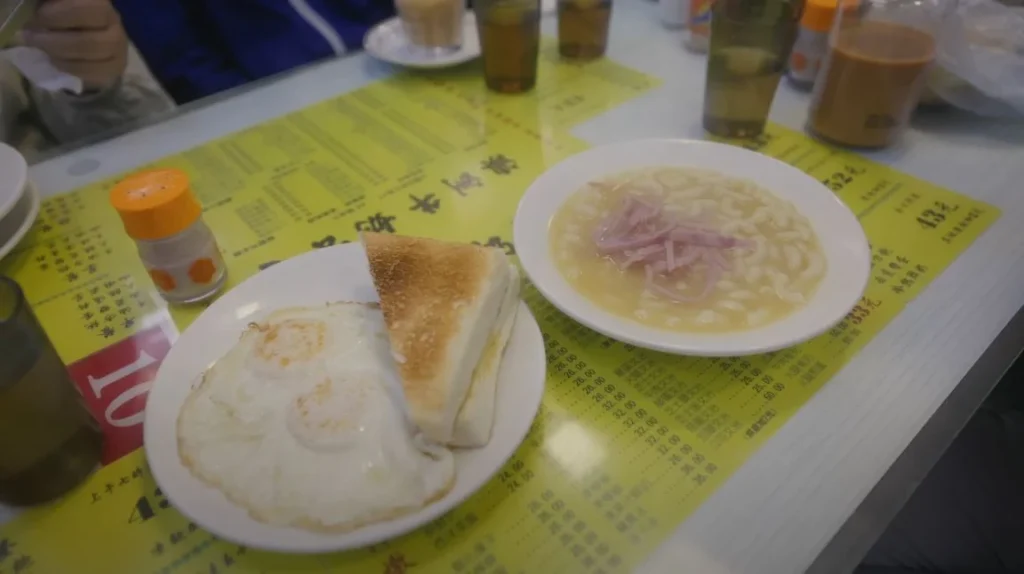
This breakfast—congee and toast from a local cha chaan teng (tea restaurant)—became my go-to morning meal. That’s not hotel breakfast. That’s what locals eat. The congee was silky, almost creamy, with bits of preserved egg and pork. The toast came thick-cut, barely toasted, with a slab of butter and condensed milk. Sounds weird. Tasted incredible.
The place had yellow laminated menus covered in Chinese characters and about six English words. I pointed at what other people were eating. The staff found this hilarious. By day three they just brought me “the usual” without asking.
Dim Sum: The Real Deal
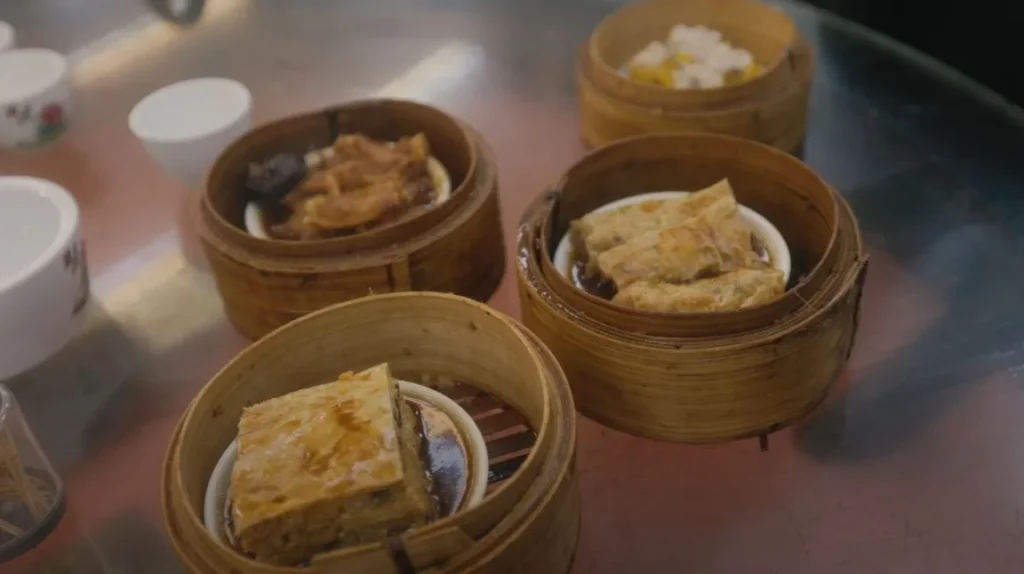
I hit three different dim sum restaurants during the trip. The first one was in a fancy hotel—good, but felt touristy. The second was this massive restaurant in Mong Kok where you grab a ticket, wait 45 minutes, then get seated at a huge round table with strangers. That’s where I got these shots.
The baskets just keep coming. Har gow (shrimp dumplings), siu mai (pork dumplings), char siu bao (BBQ pork buns), rice noodle rolls, turnip cakes. Servers push dim sum carts around and you flag them down for what you want. Each basket gets stamped on your card. At the end they tally it up.
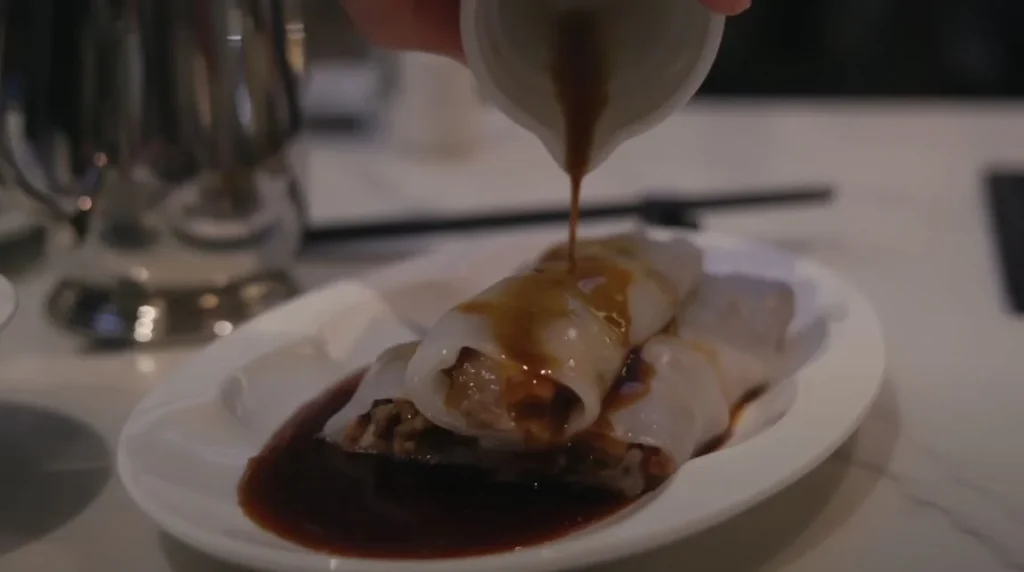
That sauce pouring over the rice noodle rolls? Soy sauce cut with a bit of sesame oil. Simple. Perfect. The noodles were so delicate they’d tear if you picked them up wrong.
What I Learned About Eating in Hong Kong:
- Don’t be afraid of small local restaurants with no English menu. Point at food, smile, it works out.
- Tea is serious business. They’ll refill your pot multiple times without asking.
- Tipping isn’t expected in most places. Some fancier restaurants add a 10% service charge automatically.
- If you see a line of locals waiting for a food stall, get in that line. They know something you don’t.
- Cha chaan tengs are open weird hours—some 24/7, some close at 3pm. Don’t assume.
The food in Hong Kong operates on a different level. There’s technique here that’s been refined over generations. A woman making egg waffles on a street corner has been doing it for 30 years. The dim sum chef trained under someone who trained under someone else. You taste that history.
Hong Kong Disneyland: Not What I Expected (In a Good Way)
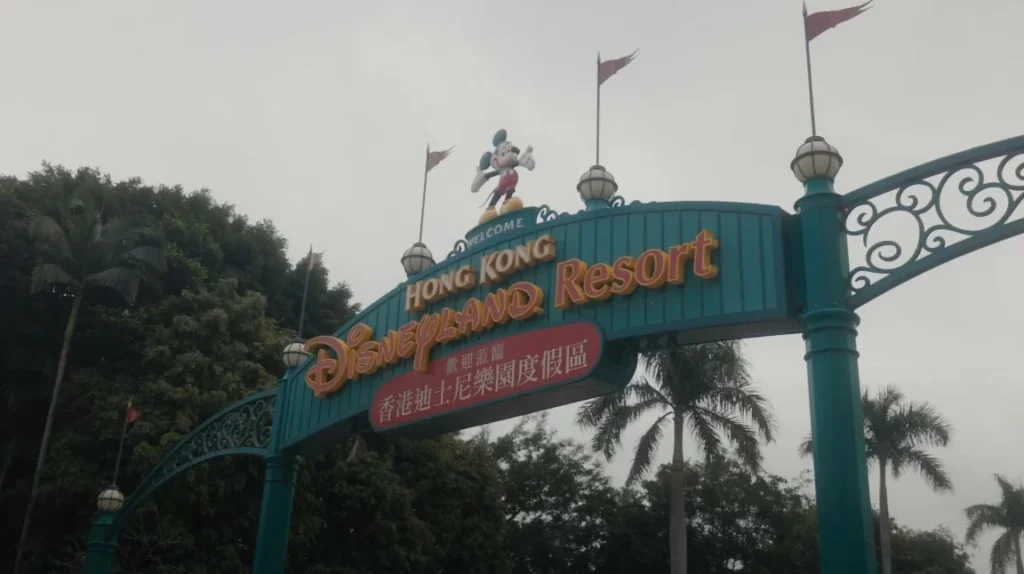
I’ll be honest—I wasn’t sure about adding Disneyland to this trip. I’m not really a theme park person. But Hong Kong Disneyland is different from the Florida or California versions. Smaller, yeah. But that turned out to be a plus.
The park sits on Lantau Island, about 30 minutes from central Kowloon via MTR. You take the Disneyland Resort Line from Sunny Bay station and the train itself is already themed—Mickey-shaped windows, Disney character handles. Felt kind of silly at first. Then I just went with it.
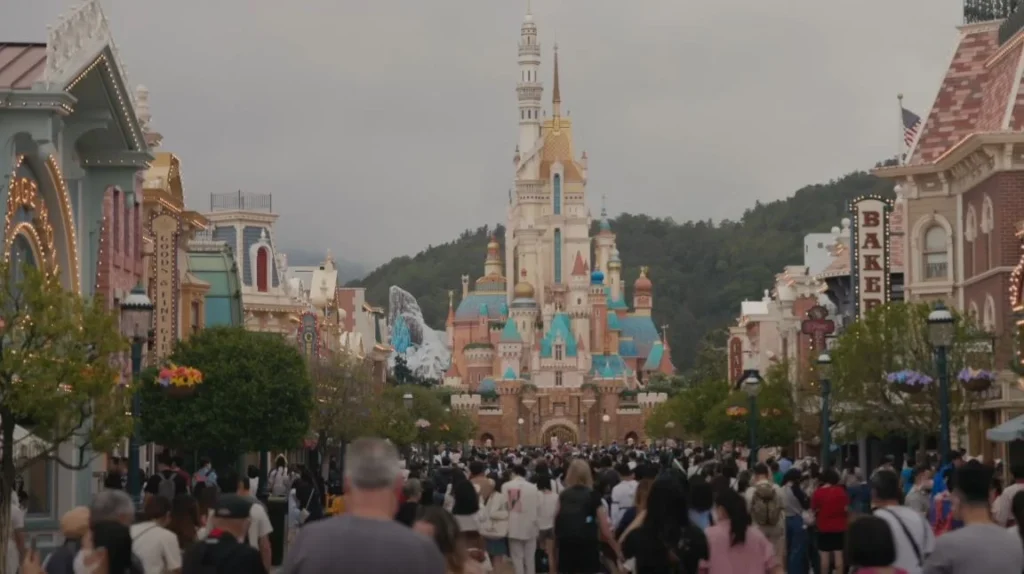
Walking down Main Street toward the castle, the place was packed but not suffocatingly so. Overcast skies kept the heat manageable. Families with kids everywhere, obviously. But also plenty of couples, friend groups, even solo visitors like me who’d come just to see what the fuss was about.
The Shows Are Actually Worth Your Time
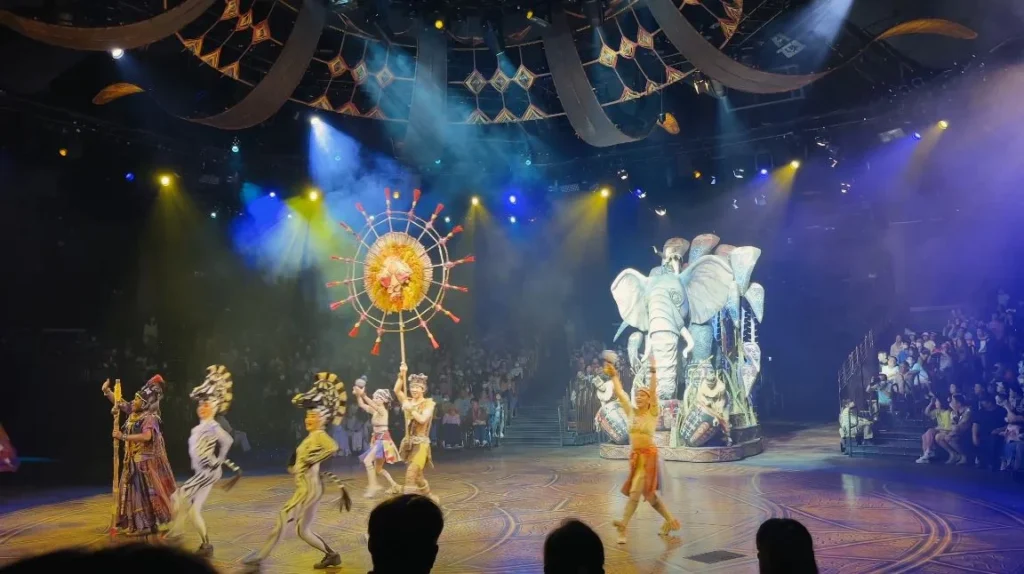
This show—Festival of the Lion King—was legitimately impressive. I walked in expecting cheesy Disney stuff aimed at five-year-olds. Instead I got acrobatics, live singing, dancers in these incredible costumes and an elephant puppet/prop thing that must’ve taken a whole team to operate. The production value was high. Higher than it had any right to be for a theme park show.
I sat through the whole 30-minute performance without checking my phone once. When’s the last time that happened?
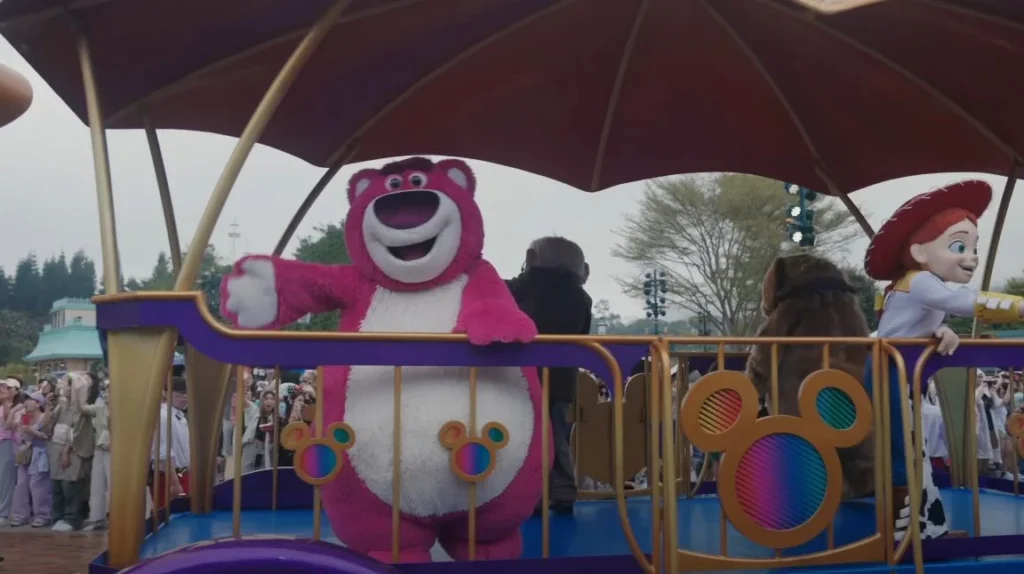
The parade came through around 3pm. Characters on elaborate floats, dancers, that whole deal. Lotso from Toy Story got weirdly enthusiastic reactions from the crowd. Apparently he’s big in Asia? I don’t know. But watching people lose their minds over a giant pink teddy bear was entertaining in it’s own right.
Toy Story Land: Better Than Expected
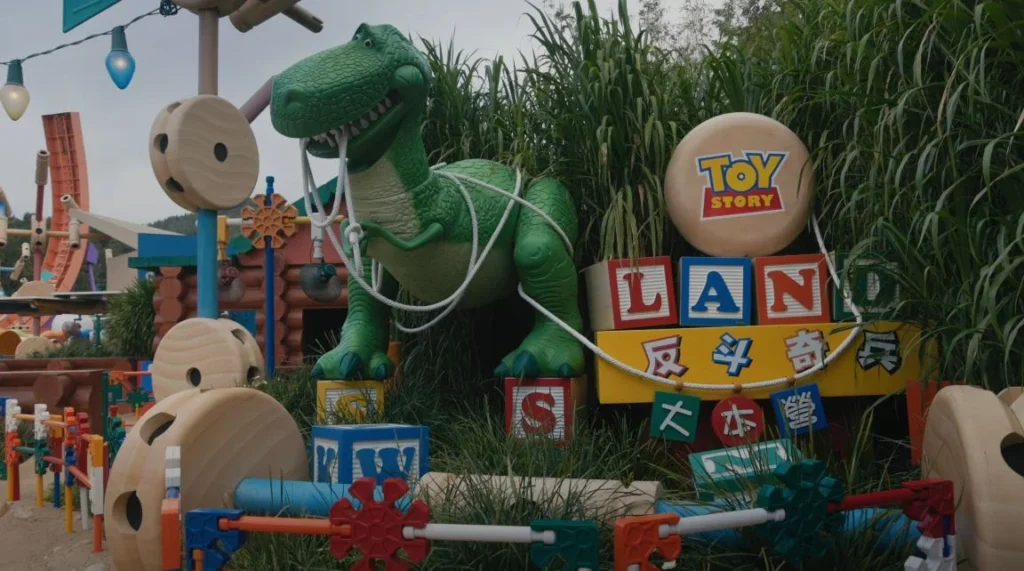
This section of the park recreated Andy’s backyard at a scale where you’re toy-sized. Everything’s oversized—building blocks as big as cars, giant toy soldiers, that massive Rex. It’s clever design. Made me feel like a kid for about 20 minutes, which I guess is the point.
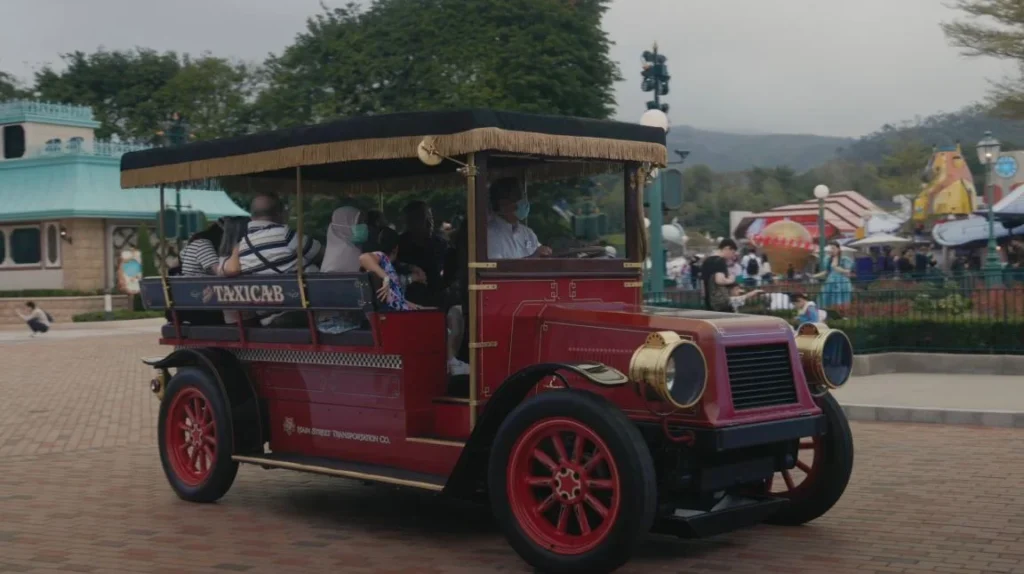
The park’s got these old-timey vehicles that take you between sections. I rode one just because. Sometimes you need to slow down and not optimize every minute. Let the day stretch out.
What Worked About HK Disneyland:
- Smaller crowds than US parks = shorter wait times for rides.
- Mix of classic Disney stuff and Asia-specific attractions (Mystic Manor is only here).
- Food was surprisingly decent. Not cheap, but better than expected theme park fare.
- Cast members spoke multiple languages—Cantonese, English, Mandarin.
- The MTR connection makes it dead simple to reach.
What Didn’t:
- Park closes early (7pm most days). Just when you’re getting into it, they’re kicking you out.
- Some areas felt unfinished or dated compared to newer Disney parks.
- Limited dining options if you want to sit down for a proper meal.
- Souvenir prices are insane, but that’s universal Disney behavior.
I spent one full day there. By 6pm my feet were done and I was ready to leave anyway, so the early closing didn’t bother me. Would I go back? Maybe for Mystic Manor alone—that ride was genuinely creative. But one visit covered it.
Temple Life: Man Mo Temple and the Incense Spiral Ceiling
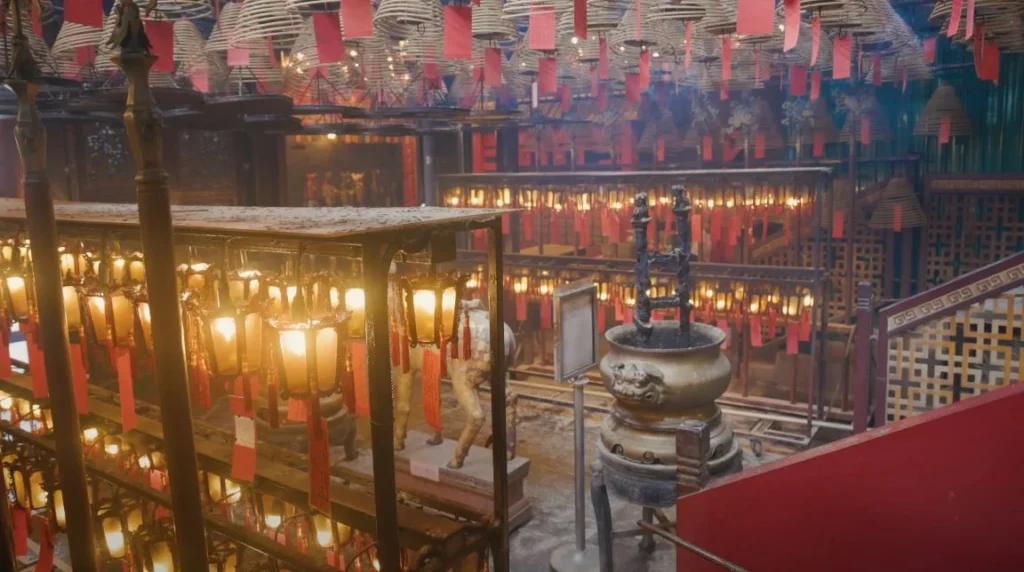
This temple stopped me cold. I’d walked past it twice thinking it was closed because there’s no obvious entrance from the street. Then I noticed people slipping through a doorway and followed them in.
Man Mo Temple in Sheung Wan. Built in 1847, dedicated to the god of literature (Man) and the god of war (Mo). But what you notice first isn’t the gods—it’s the ceiling.
Spiral incense coils hang from the ceiling everywhere. Dozens of them. They’re not burning like candles—they smolder slowly, releasing smoke that fills the entire space. The coils burn for days. People buy them as offerings, write prayers on little red tags that hang from the coils, then watch the smoke carry their words up.
The smell hit me immediately. Sandalwood, maybe? Something sweet and woody. It gets in your clothes. Hours later I could still smell it on my jacket.
How Temples Work Here (If You’re New to This):
I had no idea what I was doing. Watched other people for cues. You’re supposed to:
- Remove your hat if you’re wearing one.
- Speak quietly—it’s not silent, but you don’t yell.
- Don’t point at religious statues.
- Photos are usually okay but ask if you’re unsure.
- If you want to pray or make an offering, there are incense sticks available. Light them, bow three times, place them in the urns.
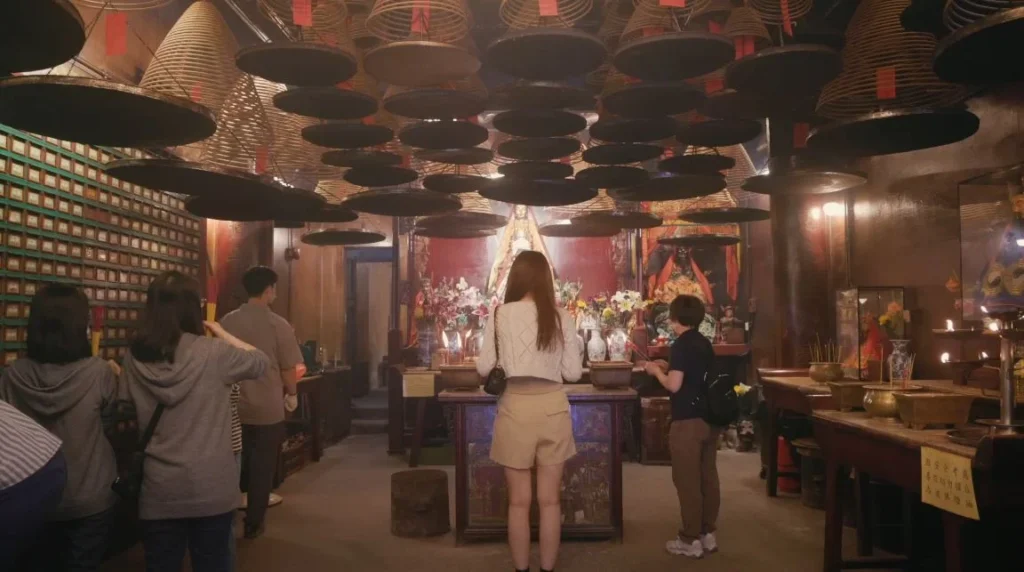
Watching people pray was more moving than I expected. An elderly woman stood in front of the altar for 10 minutes, eyes closed, totally focused. A young couple lit incense together, bowed in unison. These weren’t performances for tourists. This was real belief, real practice.
I’m not religious. But there’s something about being in a space where people have been praying for 170+ years that makes you quiet down and pay attention. The temple had weight to it. History. All that accumulated hope and fear and gratitude soaked into the wood and stone.
Finding Temples Worth Visiting:
Man Mo is the famous one, but Hong Kong has hundreds of temples. Wong Tai Sin Temple in Kowloon is massive—more like a complex than a single building. Tin Hau temples dot the coastline (Tin Hau is a sea goddess, so fishing communities built shrines to her).
You don’t need to plan these visits elaborately. Just wander. You’ll stumble across small temples in random neighborhoods. Some are tiny—just a alcove with offerings. Others sprawl across multiple buildings.
The incense smoke at Man Mo stuck with me more than almost anything else in Hong Kong. That smell, those coils slowly burning, people standing in prayer. It anchored the whole trip somehow.
Night Markets: Where Hong Kong Gets Loud
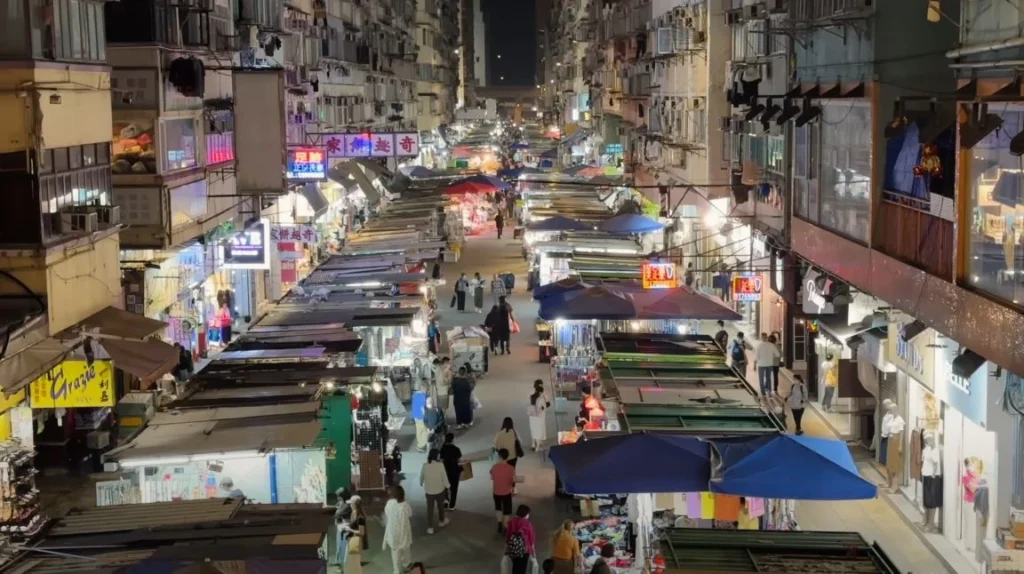
Temple Street Night Market in Yau Ma Tei. This is what I’d pictured when I thought about Hong Kong—narrow streets packed with stalls, neon signs, crowds pushing through, vendors shouting prices in Cantonese.
The market runs for several blocks. Clothes, knockoff electronics, jade jewelry, phone cases, tourist trinkets, weird gadgets you’d never buy but can’t stop looking at. It’s chaotic. Overwhelming if you’re not ready for it.
I went around 8pm when things were fully fired up. Stalls lit by harsh fluorescent bulbs. People everywhere—families, couples, tourists with cameras, locals shopping for actual necessities. Street food vendors operated out of carts wedged between clothing stalls.
What I Ate (Or Tried to Eat):
Curry fish balls from a cart. They hand you a stick with six fish balls speared on it, douse them in curry sauce. You eat standing up while people flow around you. The fish balls had this bouncy texture—not like real fish at all, more like some engineered protein. Weirdly addictive.
Egg waffles from another stall. They cook them in this special gridded pan so each waffle comes out looking like bubble wrap made of batter. Crispy outside, soft inside. I burned my tongue immediately because I couldn’t wait for it to cool.
Stinky tofu from a third cart. I was feeling adventurous. Huge mistake. It smelled like a gym bag left in a hot car for three weeks. I bought it, took one bite to say I tried it, then quietly ditched it in a trash bin while the vendor wasn’t looking. Some food bridges are too far for me.
Bargaining: A Skill I Don’t Have
Vendors expect you to haggle. They’ll quote a price—say 200 HKD for a watch. You’re supposed to offer like 80 HKD. They act offended. You walk away. They call you back. Eventually you settle at 120 HKD and everyone’s happy.
I’m terrible at this. I paid full asking price for a Hong Kong Disneyland shirt for my nephew because the back-and-forth felt exhausting.
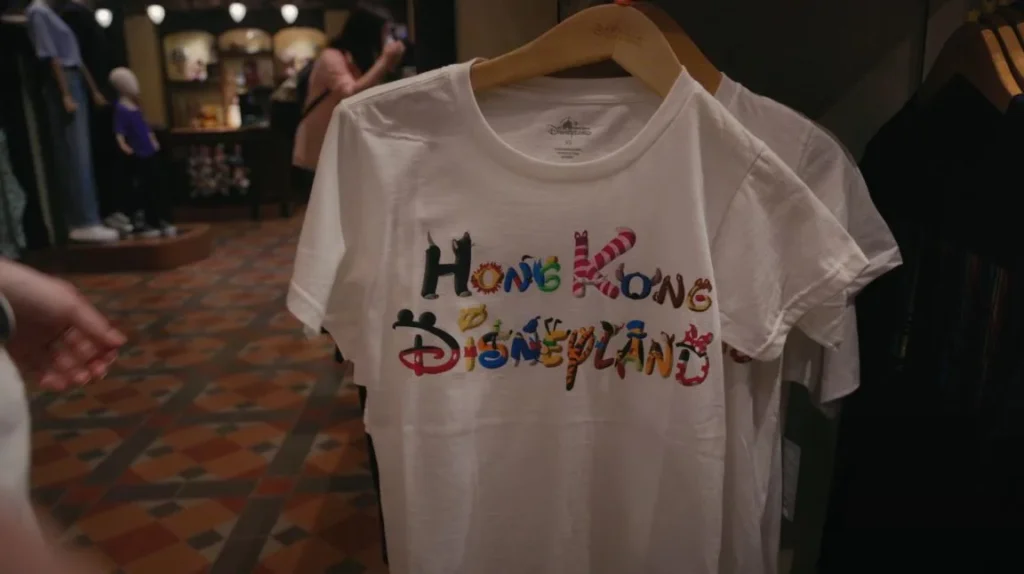
The shirt’s whatever. Basic white tee with Disney characters spelling out “Hong Kong Disneyland” in colorful letters. But it’s proof I went, so that’s something.
Night Market Survival Tips:
- Bring cash. Most stalls don’t take cards.
- Count your change. Not because people are dishonest, but because it’s chaotic and mistakes happen.
- Don’t buy electronics unless you know what you’re looking at. Lots of knockoffs.
- Try the street food. Worst case you hate it and you’re out three dollars.
- Watch your bag. Pickpockets work crowds like this everywhere, Hong Kong included.
- The market runs late—midnight on weekends. Go when you have energy.
The Ladie’s Market in Mong Kok is similar but bigger, more touristy. Temple Street felt more authentic, grittier. I preferred it.
Random Hong Kong Moments That Stuck With Me
Some trips you remember for the big ticket items—the landmarks, the famous restaurants, the planned activities. But Hong Kong? The stuff that stuck with me was weirder, smaller. The moments between the itinerary.
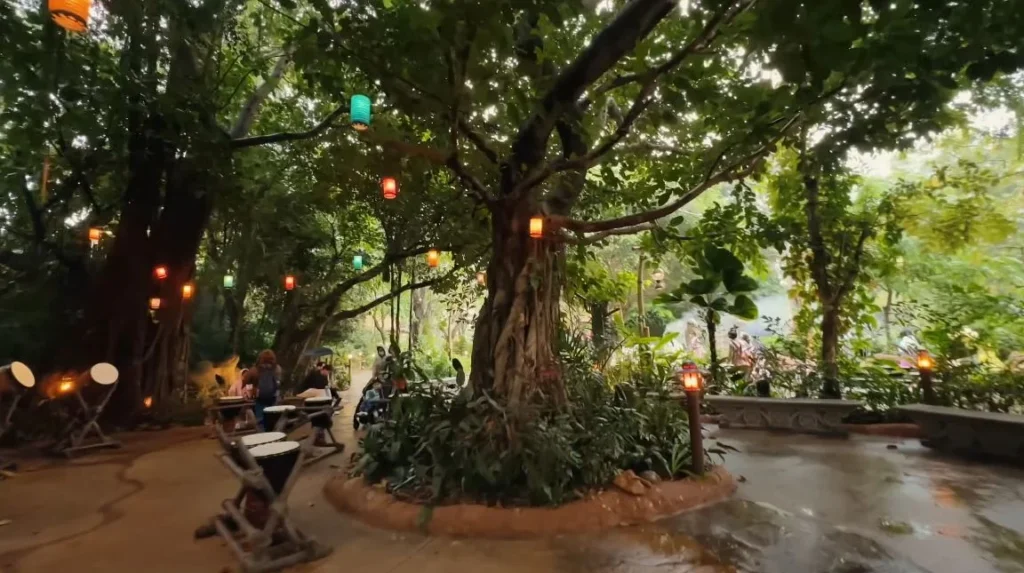
I found this courtyard restaurant completely by accident. Got off at the wrong MTR stop, started walking to correct my mistake and stumbled across this place tucked behind some residential buildings. Trees strung with colored lanterns. Simple wooden tables. The whole setup felt like someone’s backyard, not a commercial restaurant.
The menu was entirely in Chinese. I showed the server a photo of dumplings from my phone. She laughed, nodded, disappeared into the kitchen. Twenty minutes later I had soup dumplings that were better than anything I’d eaten at the “proper” dim sum spots. Cost me maybe 60 HKD total.
That’s Hong Kong. The best experiences aren’t always the ones you research and plan. Sometimes they’re just down a side street you took because you zigged when you should’ve zagged.
The Geothermal Springs Thing at Disneyland
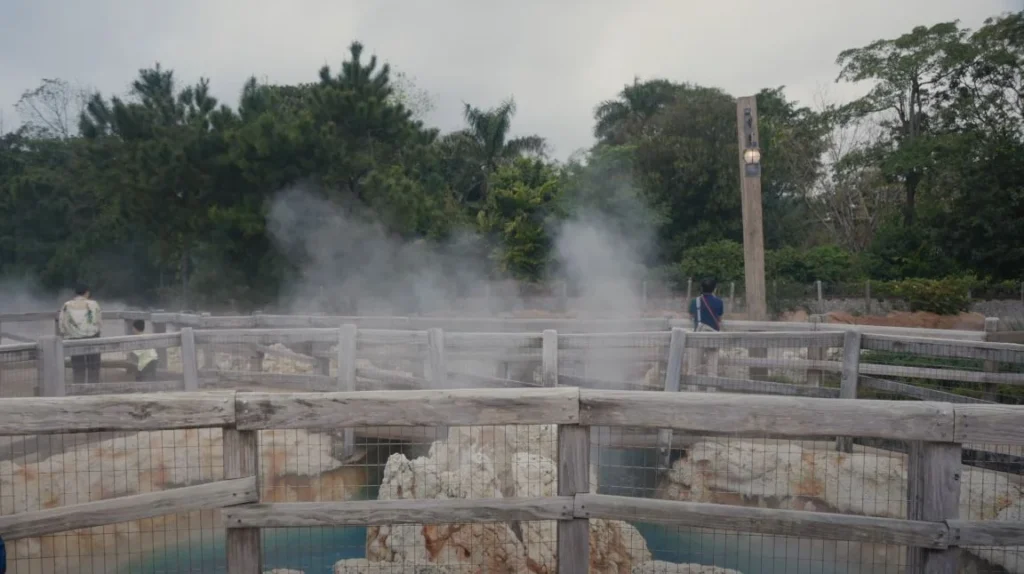
This was inside the Disneyland resort area but separate from the main park. Some kind of geothermal springs attraction with wooden walkways over steaming pools. Very Japanese onsen vibes, except you’re not getting in the water—you’re just walking through and experiencing the steam and mineral smell.
I spent maybe 15 minutes here. It was calming. Meditative, almost. The steam rising from the turquoise pools, the sound of water bubbling. Zero Disney branding in sight, which made it feel like a completely different world from the park I’d just left.
Would I specifically recommend someone visit this? Not really. But if you’re at Disneyland and have extra time, it’s there.
That Treehouse Though
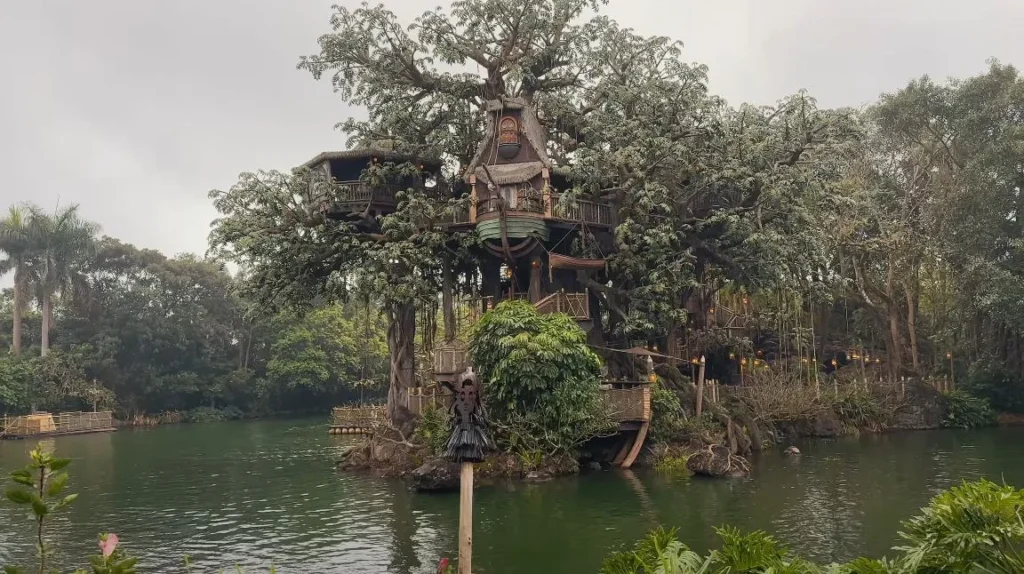
Tarzan’s Treehouse at Disneyland deserves it’s own callout because the engineering alone is impressive. This multi-story structure built into and around a massive tree (fake tree, obviously, but still), with bridges and rooms and details you can walk through.
I climbed to the top. The view from up there showed you the whole park layout—where Toy Story Land connected to Fantasyland, where the castle sat relative to everything else. Tourist families took photos at every level. I sat on a bench near the top for 20 minutes just watching people move through the park below.
Sometimes you need those pause moments. The trip can’t be constant movement or you burn out.
Shopping Malls: Fancier Than They Have Any Right to Be
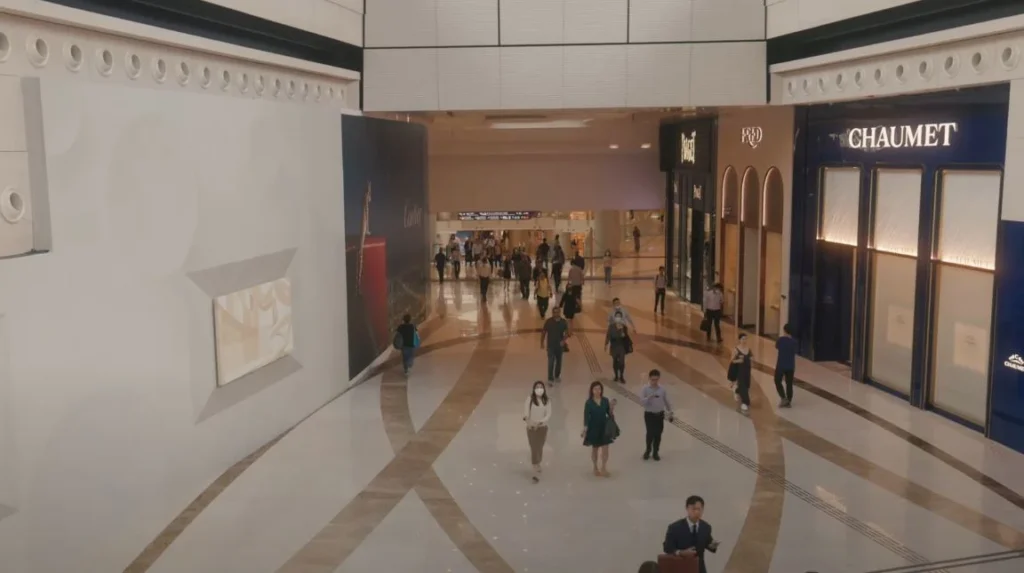
Hong Kong takes shopping seriously. The malls here aren’t like suburban American malls with a Cinnabon and a Gap. These are luxury retail experiences with marble floors, high ceilings, designer boutiques and lighting designed by someone who definitely has opinions about lumens.
This mall connected directly to an MTR station. You surface from the train and you’re inside Chaumet, looking at jewelry that costs more than my rent. Then you turn a corner and there’s a Prada store. Another corner, Hermès.
I didn’t buy anything. I couldn’t afford to breathe near most of these stores. But I walked through anyway because the space itself was impressive. The architecture, the way everything flowed. Malls as art installations.
The Weird Contrast:
You can go from a night market where someone’s selling knockoff phone cases for 20 HKD to a luxury mall where watches start at 200,000 HKD. Same city. Same MTR line. Twenty minutes apart.
That’s the Hong Kong thing again—this collision of old and new, cheap and expensive, local and international. The city doesn’t pick a lane. It drives in all of them simultaneously.
Practical Stuff: What I Wish I’d Known Before Going
Here’s the nuts and bolts information that would’ve saved me some confusion if I’d known it ahead of time.
Money & Payments:
Hong Kong uses the Hong Kong Dollar (HKD). As of my trip, exchange rate was roughly 7.8 HKD to 1 USD. Most places take cards, but cash is king at markets, small restaurants and street food stalls.
I pulled cash from ATMs as needed. My bank charged foreign transaction fees, which sucked. If you have a card that doesn’t charge those fees, bring it.
Octopus cards (the transit cards) can also be used at convenience stores like 7-Eleven and Circle K. I used mine to buy drinks, snacks, even paid for a meal once. Load money onto it at any MTR station.
Language:
Cantonese is the primary language. Mandarin is widely understood. English is hit or miss—very common in tourist areas and business districts, less so in local neighborhoods.
I got by fine with English, gestures and pointing at pictures. Google Translate helped a few times. Most importantly, people were patient when I clearly had no idea what I was doing.
Weather & What to Pack:
Hong Kong is humid. Always. Even in winter it’s humid. The overcast days during my trip kept temperatures comfortable—low 70s Fahrenheit—but the air still felt heavy.
Pack layers. Light breathable stuff. Good walking shoes because you’ll be on your feet constantly. An umbrella or rain jacket because sudden downpours happen.
I overpacked. Brought way too many clothes. You can do laundry at most hotels or find laundromats. Pack light, buy what you need there.
Getting From Airport to City:
The Airport Express train is fast (24 minutes to Hong Kong station, 20 minutes to Kowloon station) but costs 115 HKD. Regular MTR is slower (about 45 minutes) but only costs 65 HKD.
I took the Airport Express because I’d just landed after a long flight and wanted speed. Coming back I took the regular MTR because I wasn’t in a rush. Both work fine.
Safety:
Hong Kong is safe. Like, really safe. I walked through night markets at 11pm carrying my camera and never felt sketchy. Crime exists everywhere, but violent crime against tourists is rare here.
Standard precautions apply—watch your belongings in crowds, don’t flash expensive stuff unnecessarily, keep your hotel room locked. But this isn’t a city where you need to be paranoid.
Tipping:
Not expected in most places. Fancier restaurants might add a 10% service charge automatically. Taxi drivers don’t expect tips. Hotel staff might appreciate a small tip but won’t be offended if you don’t.
This confused me at first because I’m American and we tip for everything. Had to actively stop myself from leaving money on tables.
SIM Cards & Internet:
I bought a tourist SIM card at the airport—7 days of unlimited data for 88 HKD. Popped it in my phone, worked immediately. Made navigation so much easier since I could pull up Google Maps anytime.
Most hotels have wifi. MTR stations have free wifi. But having mobile data meant I wasn’t stuck searching for hotspots.
Food Safety:
I ate street food constantly. Never got sick. Hong Kong has high food safety standards even for small operations. If a stall has a long line of locals, that’s usually a good sign.
The one exception—I avoided anything that sat out at room temperature for unclear amounts of time. Stick to food that’s cooked fresh in front of you and you’re fine.
Final Thoughts: Would I Go Back?
Yeah. Definitely.
Hong Kong surprised me. I’d expected a generic Asian megacity—tall buildings, crowds, efficiency. And it’s those things. But it’s also incense smoke in 170-year-old temples. It’s egg waffles from a street cart at 10pm. It’s watching ferries cross Victoria Harbour while fog rolls in.
The city moves fast. Everyone’s in a hurry. MTR trains arrive and depart in seconds. Pedestrians walk with purpose. There’s an energy to it that’s exciting but can also be exhausting. You need to build in downtime or you’ll burn out.
What worked for me was mixing the touristy stuff (Disneyland, famous temples) with just wandering. Getting off the MTR at random stops and walking until I found something interesting. Some of my best meals came from restaurants I found purely by accident.
Things I’d Do Differently Next Time:
- Spend more time on Hong Kong Island. I stayed in Kowloon and mostly explored that side. Central, Sheung Wan and Causeway Bay deserve more attention.
- Visit the outlying islands. Lantau Island beyond Disneyland, Lamma Island, Cheung Chau—people said these are worth a day trip.
- Try the Peak Tram up to Victoria Peak for the view. I skipped it this time because the lines looked brutal.
- Explore more neighborhoods. Sham Shui Po for electronics and street food. Wan Chai for nightlife. Kennedy Town for the hipster coffee scene.
- Eat more street food, less sit-down restaurants. The best food was from carts and small stalls, not the places with English menus.
Who Should Visit Hong Kong:
If you like cities that feel alive—where old and new crash into each other and somehow work—you’ll like Hong Kong. If you want beaches and nature and quiet, go somewhere else. This is an urban experience through and through.
Food people will love it. The variety is insane. Public transit fans will appreciate the MTR. Photography enthusiasts have endless subjects—the neon signs, the markets, the skyline, the temples.
It’s not cheap. My hotel was expensive. Disneyland tickets weren’t cheap. But street food and MTR rides balanced that out. You can do Hong Kong on different budgets depending on where you eat and stay.
The Verdict:
Hong Kong gave me more than I expected. I went in thinking it’d be a quick stop—see the highlights, check it off the list, move on. Instead it became one of those trips I’m still thinking about weeks later. Still smelling that temple incense. Still craving those soup dumplings I found by accident.

